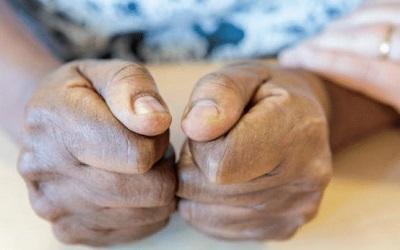Day 227, Year of #Mygration: Welcome to the UK! How long will you be staying?

In this blog post, Jo Vincett, an OU PhD Student based in the Business School, shares insights into her research coupled with her learning as a befriending volunteer at Yarl’s Wood Immigration Removal Centre. She outlines the current state of affairs of immigration-related detention in the United Kingdom and the impact on the wellbeing of detainees in immigration removal centres.
Detained migrants and asylum seekers are a forgotten group in British society, made isolated and vulnerable by the state’s policy of indefinite detention. In my research findings, participating volunteers critiqued the immigration detention regime as an act of ‘dehumanising’ individuals in a ‘hostile environment’.
This month marks the seventeenth year since Yarl’s Wood Immigration Removal Centre was purpose-built as part of the UK government’s expansion of the detention estate, one of the largest in Europe. My immersive ethnographic research with Yarl’s Wood Befrienders (YWB) explores the lived experiences of volunteer visitors who practice compassion and emotional resilience while befriending migrants and asylum seekers in Yarl’s Wood Immigration Removal Centre, near Bedford, England. In the past three years, as a researcher and volunteer befriender, I have learnt more than just what volunteers ‘do’ to offer emotional and practical support to detained people. I have met people in immigration detention who have been psychologically harmed by border control and confinement under uncertainty. In this post, I reflect on key lessons I have learnt about some of the systemic issues with the current immigration detention regime that impinge on human rights and have lacked public attention.
Here are some things most people don’t know about immigration detention:
- People are detained ‘on the spot’ often when reporting at an immigration office, meaning they arrive at detention centres with only the clothes and shoes they are wearing and the possessions they were carrying upon ‘arrest’.
- The UK is the only country in the EU not to have a time limit to how long people can be held in immigration detention. The vast majority of people arrive in detention with no idea about how long they will be there and whether they will be released or removed from the UK.
- People in immigration detention are not necessarily criminals. Those with previous convictions may be people who were trafficked. YWB has visited many women who were trafficked by ringleaders and forced into criminal activities.
- People with convictions are often not informed ahead of time that they may remain in prison under immigration powers or transferred to an immigration removal centre (see number two above).
- Children and people who are considered vulnerable ‘adults at risk’ can still be detained. Their ‘risk to the public’ is often weighed heavier than their physical and mental wellbeing. Befrienders have supported women who were pregnant, disabled, self-harming, had attempted suicide or had histories of mental health problems.
- Securing legal representation can be challenging for detainees to obtain, and even more difficult for those in detained in prisons, leaving the number of unlawfully detained people unknown.
- Social media sites and many other sites are blocked on the computers in the IT room for detainees.
- Family members detained together (over 18 years of age) can have different Home Office caseworkers who may decide to remove or release one family member over another. YWB has befriended a mother separated from her daughter, and sisters separated from each other.
- Home Office caseworkers make decisions about detainees without ever meeting them.
- Home Office letters to detainees are written in complex English with no offer of interpreters for non-English speakers to help them understand the content.
- YWB befriended 243 people in 2017-2018 who were detained in Yarl’s Wood for an average of 87 days. However, in Yarl’s Wood, 77% of all detainees were released into the community in the UK, not removed, causing unnecessary yet unforgettable trauma to those who were detained, as well as to their families, and especially their children.
- The Home Office prohibits detainees to be paid more than £1 per hour for essential jobs inside the centre, such as cleaning, catering, post room or hair salon duties, allowing significant cost savings in the running of detention centres. While not in detention, asylum seekers are not permitted to work in the UK.
- The government often contracts charter flights, in the middle of the night, as a cost-effective form of mass removal. Women cannot use aircraft lavatories without being escorted.
- Asylum seekers who may be released face the dilemma of staying in detention as ‘accommodation’ or being destitute on the streets, due to severely reduced government-contracted accommodation. If they have nowhere to live, they won’t be released on bail by a judge and will remain detained. However, the Home Office can decide to release them on to the streets, and often does, leaving people homeless.
Detained migrants and asylum seekers are a forgotten group in British society, made isolated and vulnerable by the state’s policy of indefinite detention. In my research findings, participating volunteers critiqued the immigration detention regime as an act of ‘dehumanising’ individuals in a ‘hostile environment’. Volunteers’ practices of compassion aimed to humanise people impacted by the immigration detention system and to reaffirm their human dignity through befriending relationships. Volunteer befrienders are the eyes and ears of detention, and through exploring their work, we can better understand these hidden and confined spaces that demand our attention.
Find out more about Yarl's Wood Befrienders and how you can support them
This article was originally published on The OU Research website as part of The Year of #Mygration project. Click to read the original article.
Upcoming Events
No events
